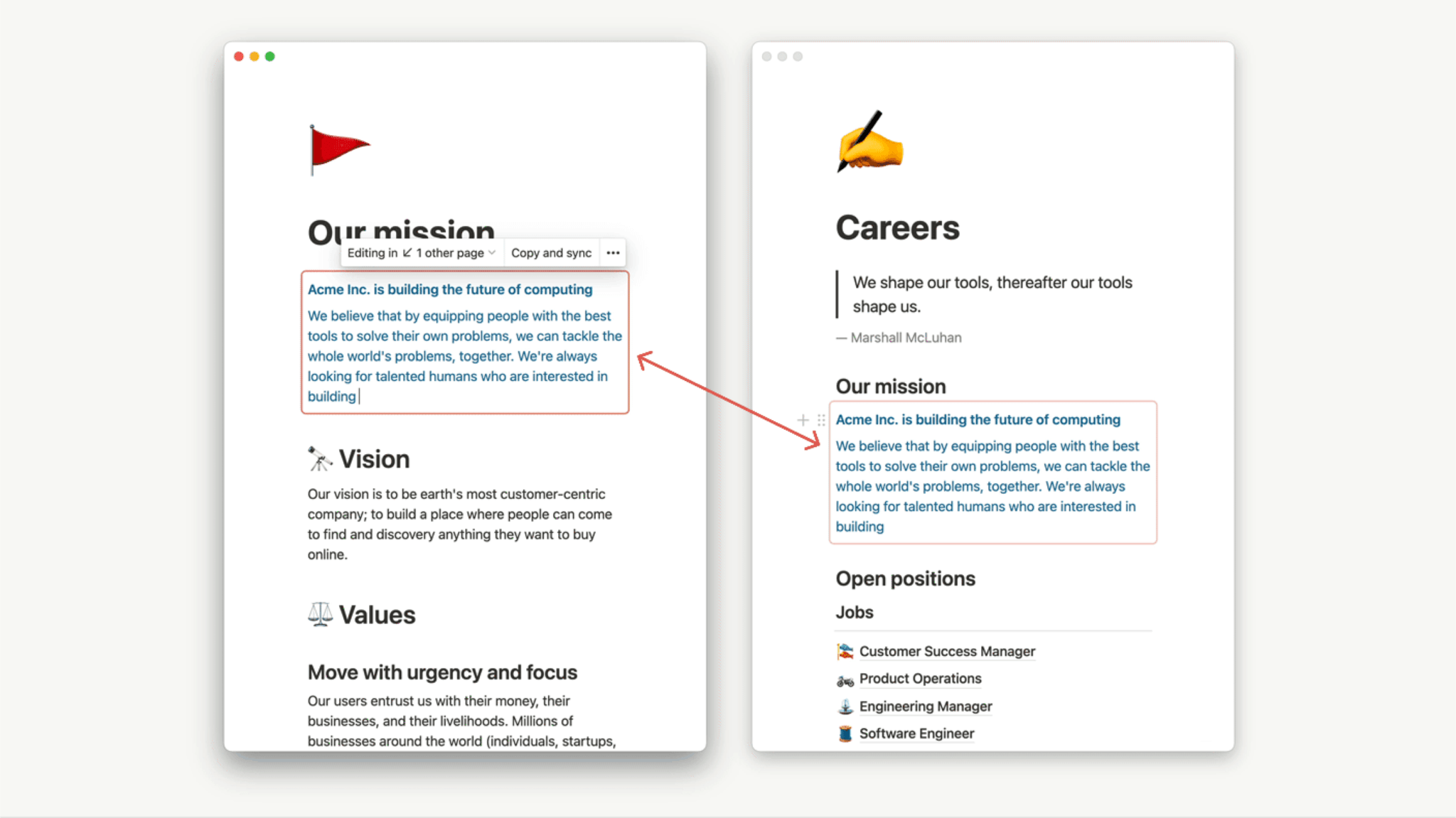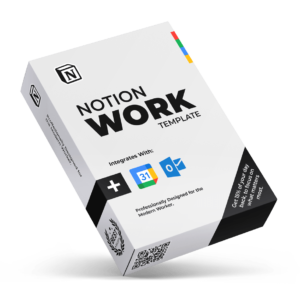If you’re reading this, chances are you’re a fellow Notion enthusiast. You’ve got your databases in check, and your pages are nested like a dream. But are you ready to take your Notion skills to the stratosphere? Today, I’ll unravel the top 3, lesser-known, advanced Notion features that will supercharge your workflow and make you the master of your Notion universe.
Try Schedule SyncTM & Save 5 Hours/week!
20% OFF • Integrates with Google Calendar • Easy to Use
1. Roll-Ups and Relation Properties
What Are Relations and Rollups in Notion?
Relations and Rollups in Notion are database properties that enable users to create meaningful connections between items in different databases. These features essentially provide a way to create relationships between different sets of data.
Example use cases
-
Connect your database of restaurants with your database of neighborhoods so you can see which restaurants are in which neighborhoods at a glance.
-
Connect your database of meeting notes with your database of clients to provide quick access to the notes relevant to each client.
-
Connect your database of tasks with your database of bigger projects to understand how projects are broken down into tasks, and how tasks contribute to projects.
-
Connect your database of candidates with your database of interviewers to keep track of who interviewed whom.
Think of Relations as a bridge that connects two databases, and Rollups as a tool that uses this bridge to perform specific calculations or operations based on the connected data.
Why Are Relations and Rollups Useful?
The power of these features lies in their potential to transform the way you manage and understand your data.
By using Relations, you can associate databases in meaningful ways. For example, you could connect a database of customers with a database of items purchased. This would help you see at a glance which customer bought which items, and vice versa.
Rollups take this a step further. Let’s say, you want to know how much each customer spent based on what they bought. Here, Rollups come in handy. They allow you to perform calculations (like sum, average, min, max, etc.) based on relational data. In this case, adding up the prices of each item related to a customer’s name gives you the total dollars they spent.
These features increase the flexibility, utility, and depth of your Notion databases, allowing you to view and manipulate your data in a more interconnected manner.
How to Use Relations and Rollups
Now that you understand the what and why, let’s get into the how.
Setting up Relations involves creating a new property in one database and choosing Relation from the property type menu. You then connect it to another existing database, effectively forming a bridge between the two databases. To make this connection two-way, enabling changes from either database to reflect on the other, you toggle on a corresponding relation in the destination database.
Rollups, on the other hand, build upon existing Relations. You create a new Rollup property and specify the relationship property you want to roll up. You then choose the property of the related pages you want to roll up and select the calculation you want to apply.
While this textual explanation provides a brief overview, the detailed setup and use of Relations and Rollups involve several steps that might seem a bit overwhelming. Hence, we’re including a video walkthrough for you to follow along and implement these features in your Notion setup.
2. Synced Blocks
What are Synced Blocks?
In essence, synced blocks in Notion are content pieces that can be linked together across different pages or even within the same page. This means that when you edit one instance of a synced block, all its instances get updated in real-time, maintaining consistency across your documents. The edited content gets indicated by a red ring. You can sync both existing content and new content.

Why Use Synced Blocks?
The power of synced blocks lies in their ability to save time and increase productivity. Whether you’re creating a company-wide document that needs to remain consistent across multiple departments, or maintaining a personal workspace where various elements need to be updated simultaneously, synced blocks help ensure that changes made in one location automatically reflect across all others.
How to Create and Manage Synced Blocks
Creating a synced block is straightforward. Here’s a simplified version of the steps involved:
Syncing content across pages:
- Select and copy the blocks you want to sync.
- Navigate to the desired page and paste the copied blocks.
- Choose ‘Paste and Sync’.
Syncing within the same page:
- Select the blocks you wish to sync.
- Click on the block handle on the left of the selection.
- Choose ‘Turn into’ and then ‘Synced block’.
- Click on ‘Copy and sync’, then paste in the same page.
Remember, you can always create a new synced block using the ‘/syncedblock’ command or the ‘+’ menu.
Editing Synced Blocks: When you hover over a synced block, it will show a red border. Click on it to edit the content. The changes you make will reflect across all other synced blocks.
Unsyncing Blocks: If you no longer want a block to be synced, you can easily unsync it by clicking on the block handle and selecting ‘Unsync’. If you want to unsync all instances, go to the original synced block and select ‘Unsync all’.
3. Formulas
What Are Formulas in Notion?
Formulas in Notion allow users to add a specialized property type to their databases that can run calculations and functions based on other properties. You can consider a formula as a function that transforms given inputs into desired outputs. In Notion, these inputs are often properties of the database that the formula operates on.
When using formulas, it’s important to understand several key terminologies such as function, syntax, argument, string, boolean, and concatenation. Understanding these terminologies and how they interact with each other in a formula is crucial to using them effectively.
-
Function: A relation from a set of inputs to a set of possible outputs where each input is related to exactly one output.
-
Syntax: Refers to the order of letters and terms in your formula to return the right value.
-
Argument: Refers to any input in a function, like a property.
-
String: A value type, most often referring to text (i.e. a string of letters next to each other). Strings are always wrapped in quotation marks in formulas.
-
Strings are unique from other value types, such as numbers or dates.
-
A substring refers to a segment of a larger string. “No” is a substring of “Notion”.
-
-
Boolean: A boolean is either true or false.
-
Concatenate: Combines two strings together. Example: concat(“add”, “text”) would yield “addtext”.
Why Use Formulas?
Formulas empower users to perform dynamic operations on their databases. They are capable of everything from simple arithmetic calculations to more complex data manipulations.
- Data Manipulation: Formulas enable users to manipulate data directly within the database. For instance, they can automatically calculate the sum, average, or other mathematical computations of a number set.
- Data Analysis: You can use formulas to analyze data and gain insights. For instance, you could create a formula to determine the days between two dates, calculate percentage increases, or track progress on tasks.
- Automation and Efficiency: Formulas can automate repetitive tasks, making data management more efficient. For example, you could use a formula to automatically update the status of tasks based on their due date and completion date.
How to Use Formulas
Terminology in Action
Here’s an example to tie all of the above together: concat(“add”, “text”)

concat is the function. It applies a certain calculation or action to the inputs contained in its parentheses.
“add” and “text” are arguments in that function. Each argument is text (otherwise known as a string).
Functions can use a variety of different arguments, such as checkboxes (also known as booleans), numbers, or dates.
Function syntax requires strings to be wrapped in quotes and their arguments to be contained within parentheses.
Final Thoughts
If you feel a little overwhelmed by some of these more advanced Notion features, don’t sweat it! I’ve been using Notion for over 5 years and am truly just beginning to work these more challenging features into my workflows and templates.
Speaking of, one of my latest templates, “Notion Work Template” incorporates both Relations & Rollups and Formulas. That template was built to shave a few hours off your work week to give you time back to focus on the things that matter most. It syncs with your Google and/or Outlook calendar and connects all of your Goals, Projects, Tasks, and Events, to one another.
Allowing you to hit your work or personal goals 10x faster! You can check it out here if you’re interested and get 20% OFF!
Earlier on in my Notion journey, I found that using other, more experienced users’ templates and dissecting, breaking, and tweaking them led to a faster understanding of Notion and its advanced features.
Cheers!



